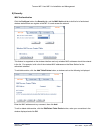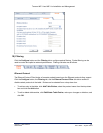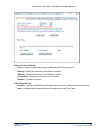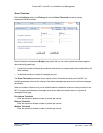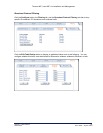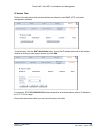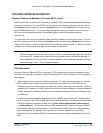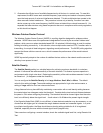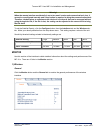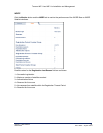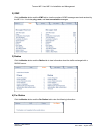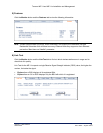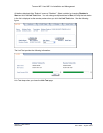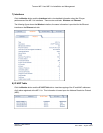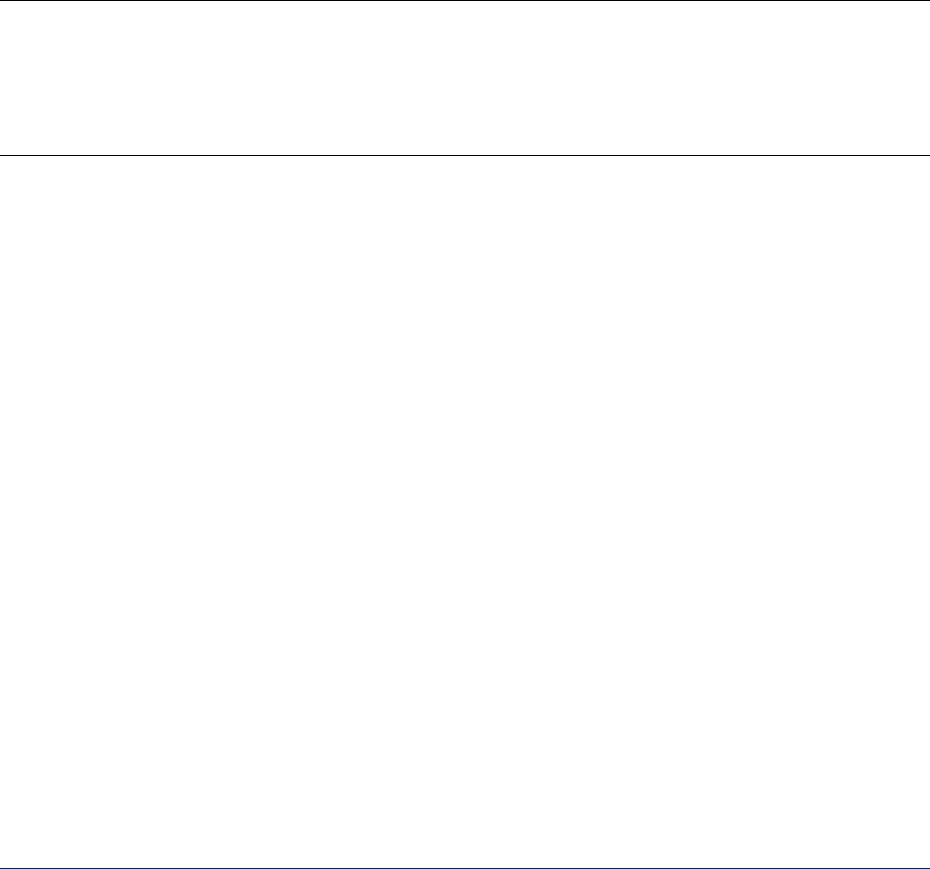
Tsunami MP.11and MP.11a Installation and Management
ADDITIONAL INTERFACE INFORMATION
Dynamic Frequency Selection (Tsunami MP.11a only)
With Tsunami MP.11a units, Dynamic Frequency Selection (DFS) is enabled automatically based upon
the country you select. You can tell DFS is in use because the frequency selection drop-down box on
the Interfaces page is grayed out (click the Configure button and the Interfaces tab); it displays only
the DFS-selected frequency. You cannot select a preferred frequency or band in which to operate.
DFS scans all available frequencies in all available bands to select the operating frequency
automatically.
To comply with your country’s regulations, change the DFS selection to specify your country. You can
do this by logging into the unit, clicking the Configure button and selecting the System tab. There is a
drop-down box labeled “Country” with all available countries from which to select. Choose your country,
configure the unit as required, and reboot for the settings to take effect.
Note: Because DFS must scan for radar and interference on multiple channels, you must allow a
sufficient amount of time for the units to start up. This is considerably longer than when the unit
is not using DFS. Startup time is usually within two to three minutes if no radar is detected. If
radar is detected, the unit may reboot multiple times before it becomes fully operational and can
take much longer to start. This is expected behavior.
DFS Requirement
Dynamic Frequency Selection (DFS) is required in ETSI countries and is enabled automatically when
you select a country with a regulatory domain that requires DFS. DFS is required in ETSI countries for
two purposes.
1. Radar avoidance both at startup and while operational. To meet these requirements, the Tsunami
MP.11a BSU scans available frequencies at startup for the presence of a radar signal on all
available frequencies; it does not use any frequency in which radar signals are detected. Once fully
operational on a frequency, the BSU actively monitors the occupied frequency for radar interference.
If radar interference is detected, the BSU logs a message and reboots to find a new frequency free
of interference.
Understand that radar detection is performed only by the BSU and not by the SU. When an SU is
set to a country in which DFS is used, it scans all available channels upon startup looking for a BSU
that best matches its connection criteria (such as Base Station System Name, Network Name,
and Shared Secret). The SU connects to the BSU automatically on whatever frequency the BSU
has selected. Because of this procedure, it is best to set up the BSU and have it fully operational
before installing the SU, although this is not required. If a BSU reboots because of radar
interference, the SU loses its WORP link and reboots to rescan available frequencies for an active
BSU.
Chapter 5. Web Interface 67
CPN 65755 Issue Date: August 2003



